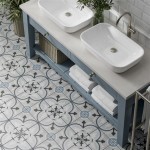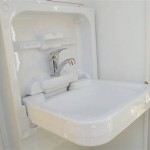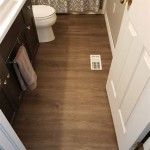Do It Yourself Bathroom Vanity Installation Costs In Taiwan
Embarking on a do-it-yourself (DIY) bathroom vanity installation in Taiwan can be a rewarding endeavor, offering significant cost savings compared to hiring professional contractors. However, accurately estimating the costs associated with such a project requires a detailed understanding of the various factors involved. This includes the price of the vanity itself, the necessary tools and materials, and potential unforeseen expenses that can arise during the installation process. This article provides a comprehensive guide to the cost considerations for a DIY bathroom vanity installation in Taiwan, focusing on the key elements homeowners should evaluate before commencing their project.
The appeal of DIY projects stems largely from the potential for cost reduction. Professional installations involve labor costs, which can be a substantial portion of the overall expense. By undertaking the project independently, homeowners can eliminate these labor fees, theoretically saving a considerable sum. However, this assumes a certain level of skill and experience. Inexperienced individuals might encounter difficulties leading to errors, rework, and ultimately, increased costs. Therefore, a realistic assessment of one's capabilities is crucial before deciding to proceed with a DIY installation.
Taiwan's market offers a wide range of bathroom vanities at varying price points. The cost of the vanity will largely depend on the material, size, design, and brand. Imported vanities are generally more expensive than locally manufactured options. Factors such as the type of countertop material (e.g., marble, granite, quartz, or laminate), the complexity of the cabinetry, and the inclusion of features like soft-close hinges and integrated lighting will also influence the price. Careful comparison shopping and consideration of one's budget are essential steps in selecting a suitable vanity.
Beyond the vanity itself, a number of tools and materials are required for a successful installation. These can range from essential items like a wrench, screwdriver, level, and measuring tape to more specialized tools like a pipe cutter, drill, and sealant gun. While some homeowners may already possess some of these tools, others will need to be purchased or rented. The cost of these tools can add significantly to the overall project expense, particularly if specialized tools are required for plumbing or electrical work.
Furthermore, materials such as plumbing fittings, sealant, screws, shims, and caulk are necessary for ensuring a watertight and secure installation. The specific types and quantities of these materials will vary depending on the configuration of the existing plumbing and the design of the new vanity. It's advisable to create a comprehensive shopping list and accurately estimate the required quantities to avoid unnecessary trips to the hardware store and potential project delays.
Vanity Costs and Material Choices
The core cost of a DIY bathroom vanity installation is undoubtedly the vanity itself. In Taiwan, the price range for vanities is exceptionally broad, catering to diverse budgets and aesthetic preferences. At the lower end, basic, locally produced vanities with laminate countertops can be found for as little as NT$3,000 to NT$5,000. These options are often functional and straightforward in design, suitable for budget-conscious homeowners or smaller bathrooms.
Mid-range vanities, typically priced between NT$5,000 and NT$15,000, offer a wider selection of materials and styles. These vanities may feature solid wood cabinets, higher-quality laminate or engineered stone countertops, and more intricate designs. Brands offering these options often incorporate details like soft-close drawers and doors, enhancing the overall user experience.
High-end vanities, exceeding NT$15,000, represent the premium segment of the market. These vanities are often characterized by superior craftsmanship, luxurious materials like marble or granite countertops, and customized designs. They may incorporate integrated lighting, advanced storage solutions, and high-end fixtures. Imported vanities from European or North American brands typically fall into this category.
The choice of countertop material significantly impacts the overall cost. Laminate is the most affordable option, followed by engineered stone (such as quartz), and then natural stone (such as marble and granite). Each material offers a unique set of advantages and disadvantages in terms of durability, aesthetics, and maintenance requirements. For example, marble offers a luxurious appearance but is more susceptible to staining and etching than quartz, which is highly durable and stain-resistant.
The size of the vanity is another critical factor determining the cost. Larger vanities with multiple drawers and cabinets will invariably be more expensive than smaller, more compact models. The design complexity also plays a role. Vanities with intricate carvings, custom finishes, or unique shapes will typically command a higher price than simpler, more streamlined designs.
Tools and Materials Costs
After the vanity itself, the cost of tools and materials represents the next significant expense in a DIY bathroom vanity installation. The specific tools required will depend on the complexity of the installation, the type of plumbing connections involved, and the homeowner's existing toolkit. Essential tools include a wrench set, adjustable wrench, screwdriver set, measuring tape, level, utility knife, and safety glasses. These items can be purchased individually or as part of a tool kit.
For plumbing connections, a pipe cutter or saw, pipe wrench, and plumber's tape are often necessary. If the existing plumbing needs to be modified, additional tools like a soldering torch (for copper pipes) or PVC cutter and primer (for PVC pipes) may be required. Electrical work, such as installing a new outlet for vanity lighting, should only be undertaken by qualified electricians. If electrical modifications are necessary, it's best to engage a professional to ensure safety and compliance with local regulations.
Materials such as plumbing fittings (including supply lines, drain pipes, and P-traps), sealant, caulk, screws, shims, and wood putty are essential for a secure and watertight installation. The cost of these materials is typically relatively low compared to the vanity itself, but it's crucial to purchase high-quality products to avoid leaks and other problems down the line. Silicone caulk, for example, is preferred for sealing joints around the vanity and backsplash due to its excellent water resistance.
The cost of disposing of the old vanity also needs to be considered. In some areas, there may be fees associated with disposing of large items at landfills or recycling centers. Homeowners can explore options like donating the old vanity to a charitable organization or selling it online to reduce disposal costs.
Potential Hidden Costs and Contingency Planning
One of the key challenges in estimating the cost of a DIY project is anticipating potential hidden costs and unforeseen expenses. These can arise from a variety of factors, including unexpected plumbing or electrical issues, damage to existing structures, and the need for additional materials or tools. Accurate cost estimation requires accounting for potential problems and setting aside a contingency fund to cover these unexpected expenses.
Plumbing issues are a common source of hidden costs. Existing plumbing lines may be corroded, damaged, or improperly installed, requiring repairs or modifications. The homeowner may encounter leaks, blockages, or other plumbing problems that necessitate the involvement of a professional plumber. Electrical issues, such as faulty wiring or outdated outlets, can also add to the cost.
Damage to existing structures is another potential concern. Removing the old vanity may damage the surrounding walls or flooring, requiring repairs before the new vanity can be installed. If the walls are not level or plumb, shimming and leveling may be necessary to ensure a proper fit. It's also possible that the floor underneath the old vanity is damaged, requiring repairs or replacement.
The need for additional materials or tools can also increase the overall cost. Homeowners may underestimate the quantity of sealant, caulk, or screws required for the installation. They may also discover that they need specialized tools that were not initially anticipated. It's advisable to overestimate the required quantities of materials and rent or purchase tools as needed.
To mitigate the risk of hidden costs, it's recommended to thoroughly inspect the existing plumbing, electrical, and structural conditions before starting the project. Take detailed measurements and create a comprehensive plan that includes all necessary steps and materials. Set aside a contingency fund of at least 10-20% of the estimated project cost to cover unexpected expenses. If unfamiliar with plumbing or electrical work, consider consulting with a professional to avoid costly mistakes and ensure safety.
In conclusion, a DIY bathroom vanity installation in Taiwan can potentially offer cost savings, but accurate cost estimation requires careful planning, attention to detail, and realistic assessment of one's skills. By considering the cost of the vanity, tools, materials, and potential hidden expenses, homeowners can make informed decisions and avoid budget overruns. While the potential for cost savings is appealing, it's imperative to prioritize safety and seek professional assistance when necessary to ensure a successful and long-lasting installation.

Bathroom Vanity Vanities Sink Narrow Floating Live Edge

Buy Bathroom Vanity Unit Sink Washstand Slimline White Painted In

Rustic Bathroom Vanity Custom Wooden

Bathroom Vanity Vanities Sink Narrow Floating Live Edge

20 Creative Small Bathroom Storage Ideas Oppein

Rustic Barn Door Bathroom Vanity Free Farmhouse

Rustic Barn Door Bathroom Vanity Free Farmhouse

Solid Oak Bathroom Vanity Unit Ceramic Inset Basin 310inset

11 Exquisite Bathroom Vanity Designs

High Quality Bathroom Furniture Duravit
Related Posts







